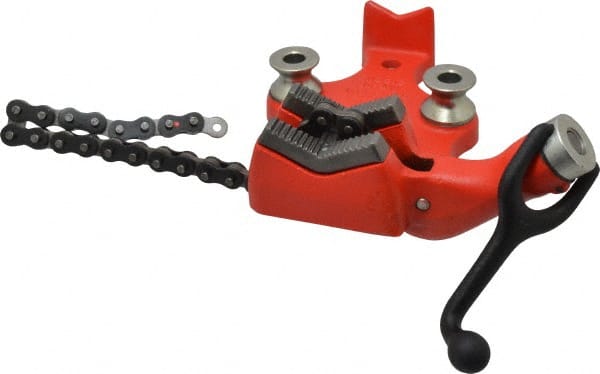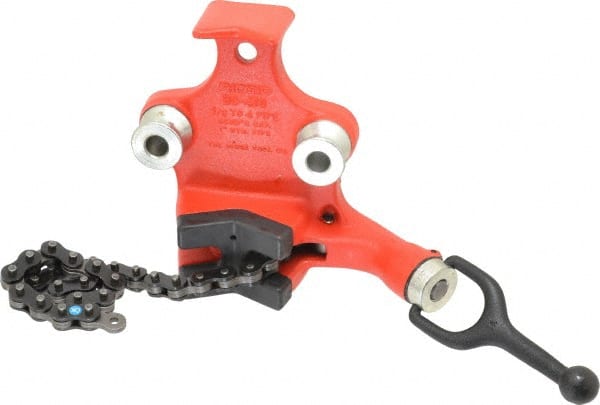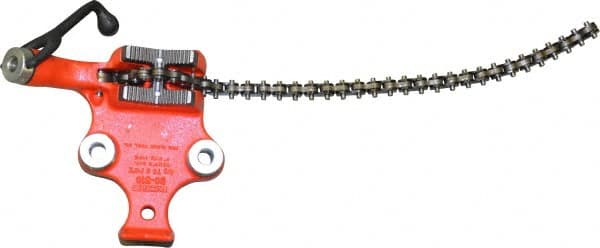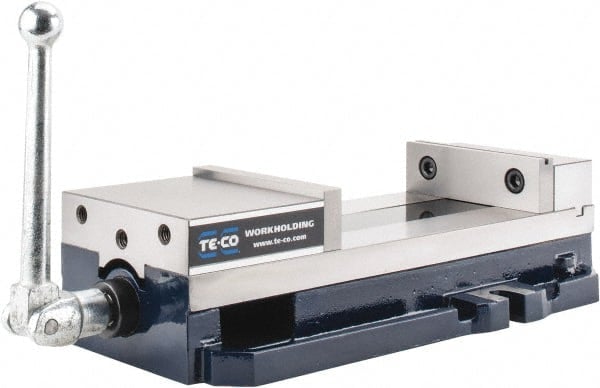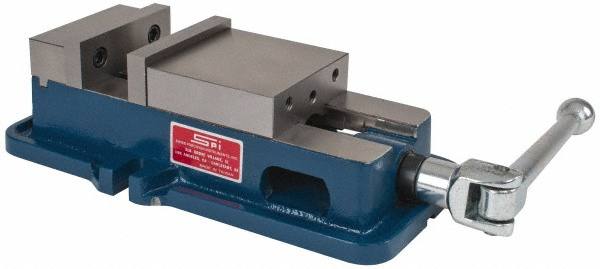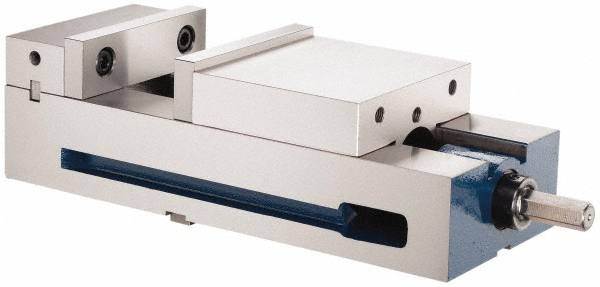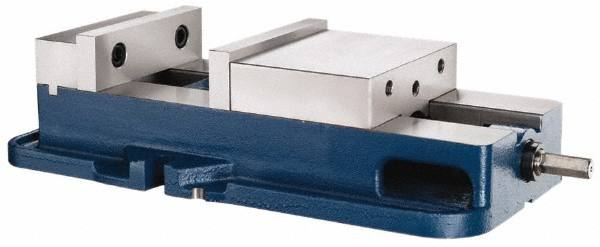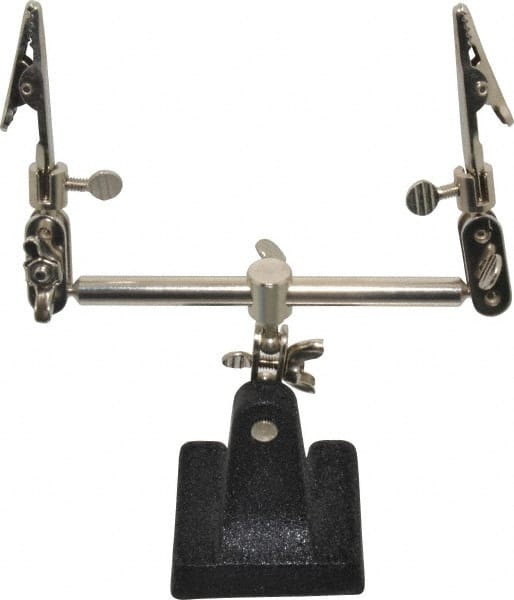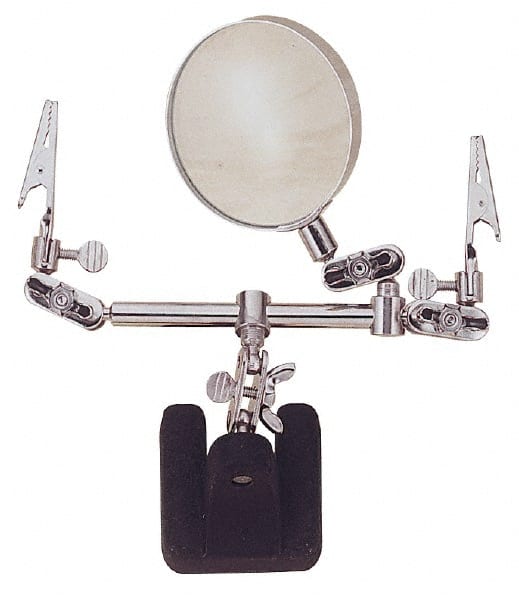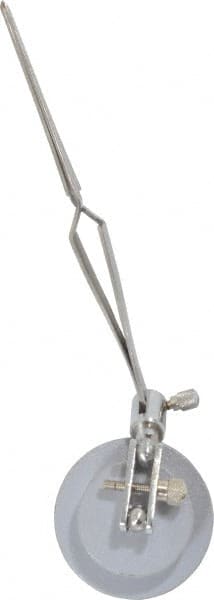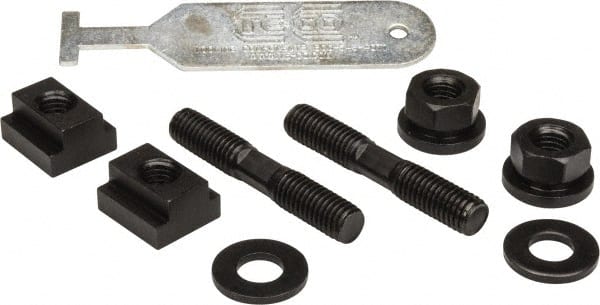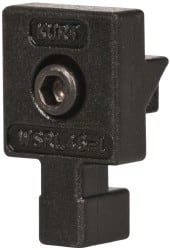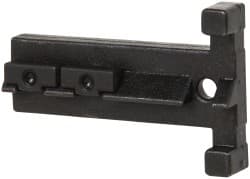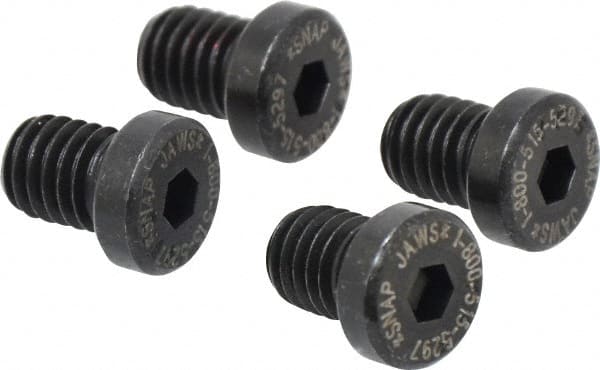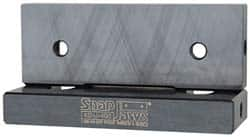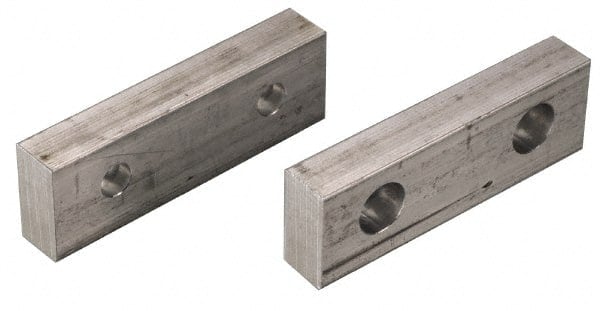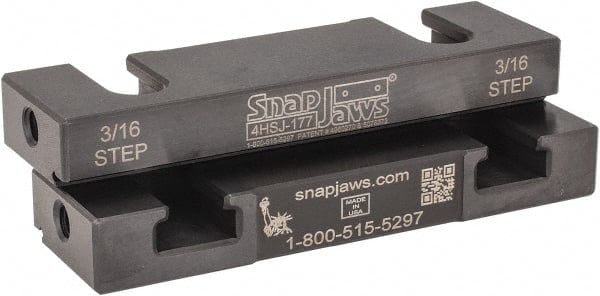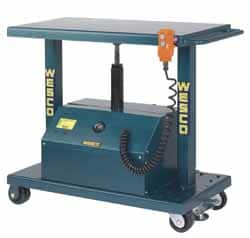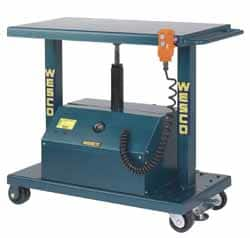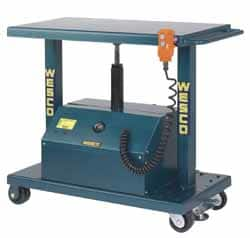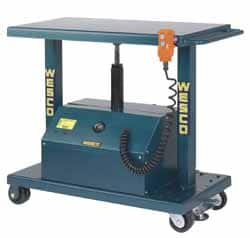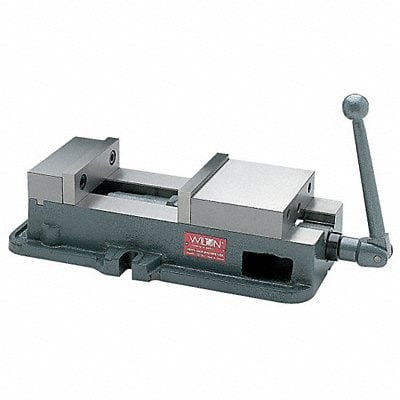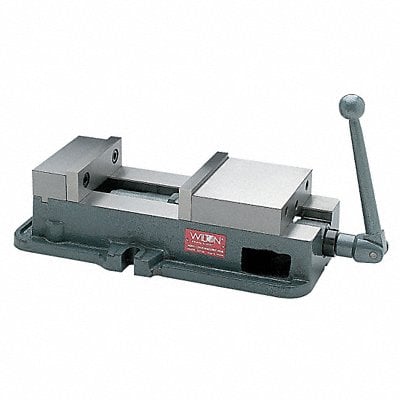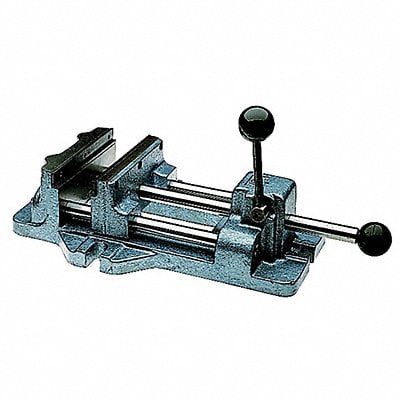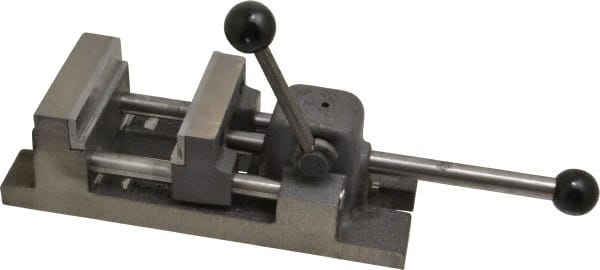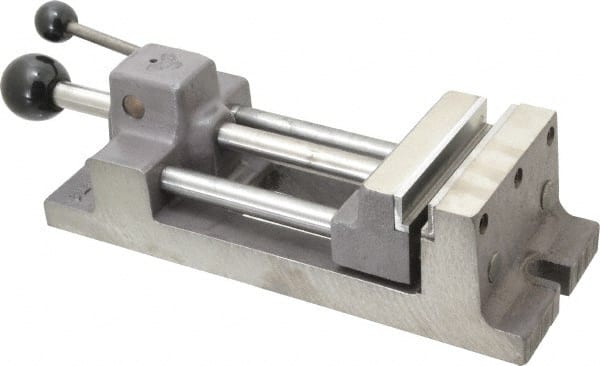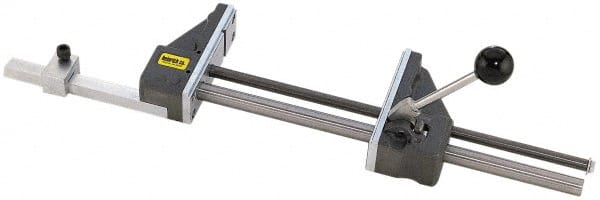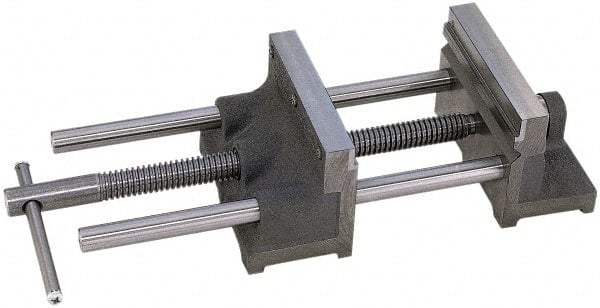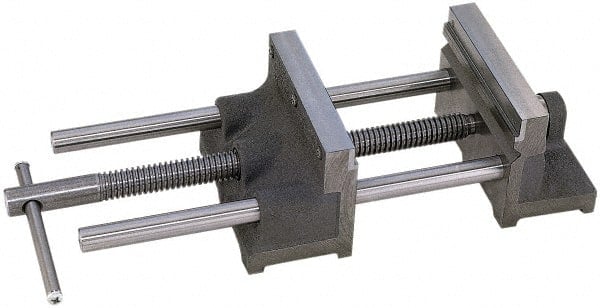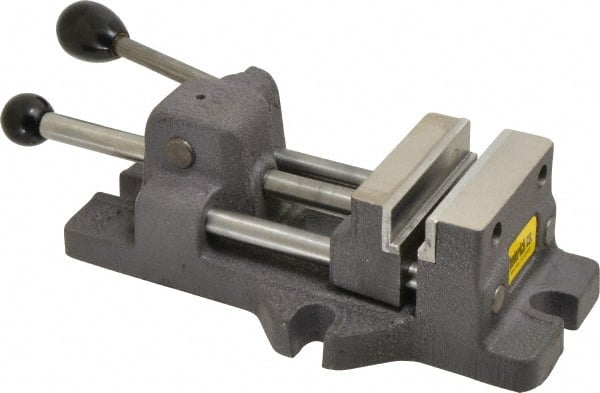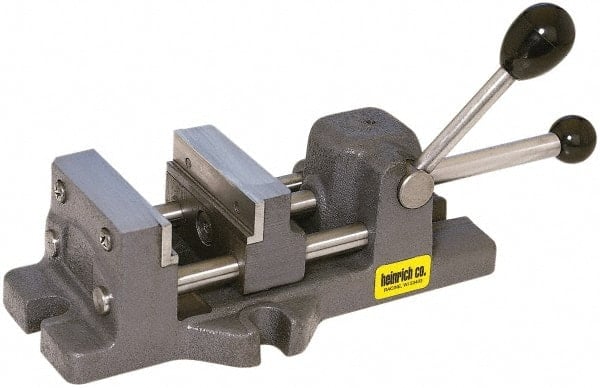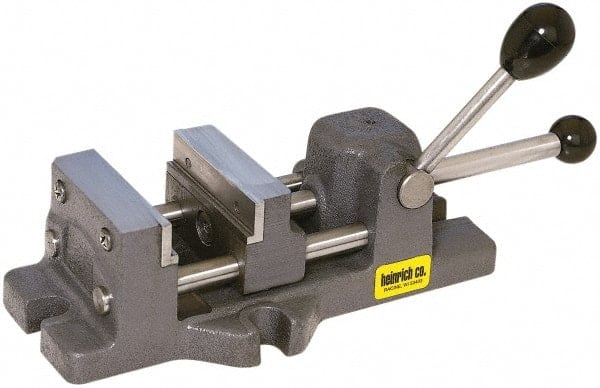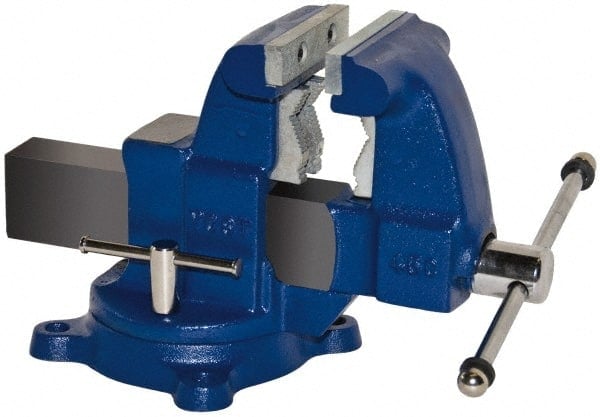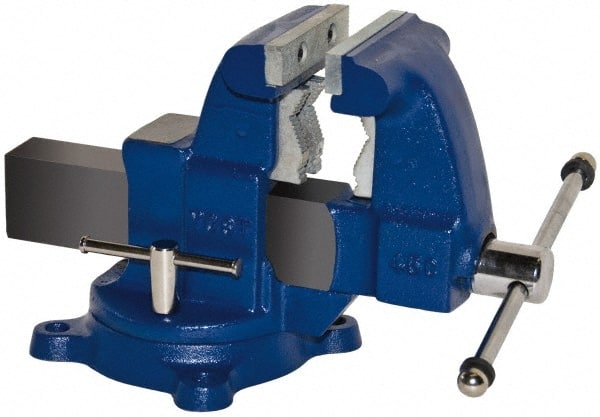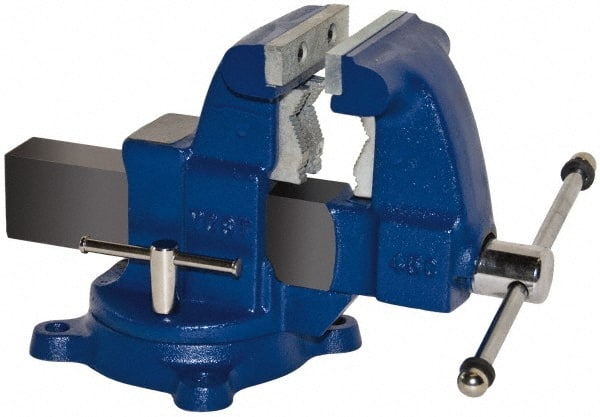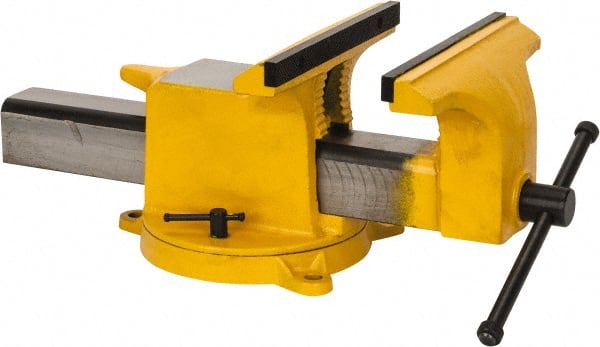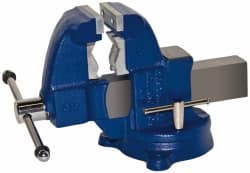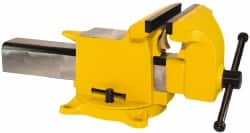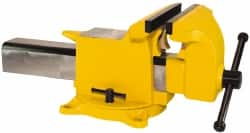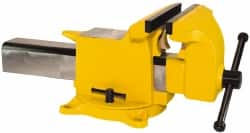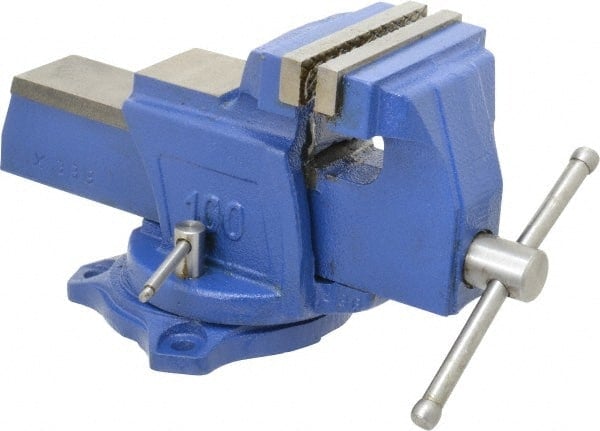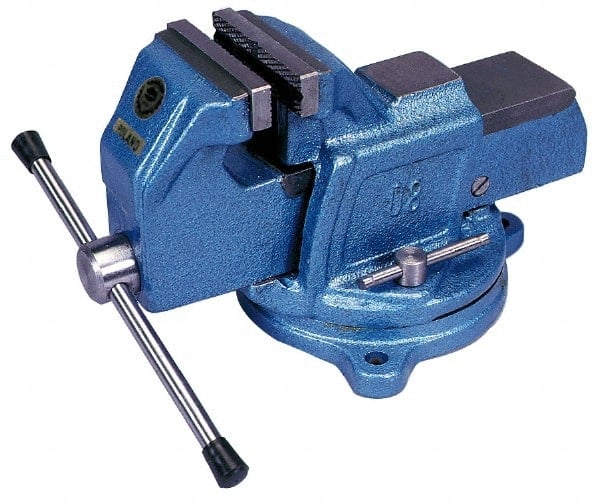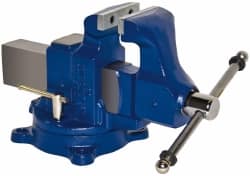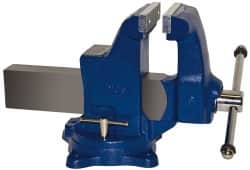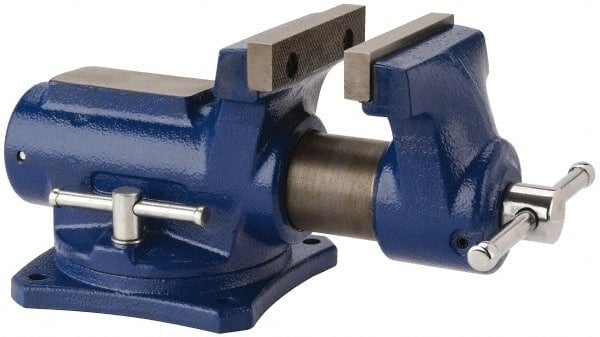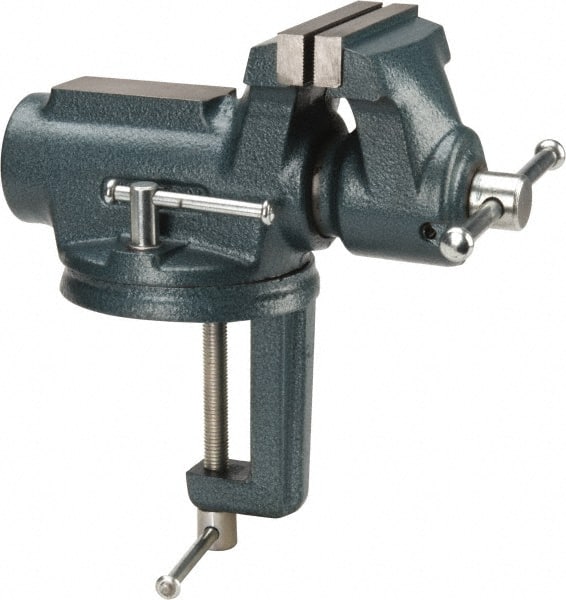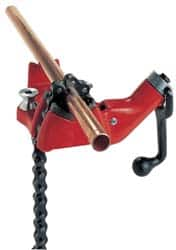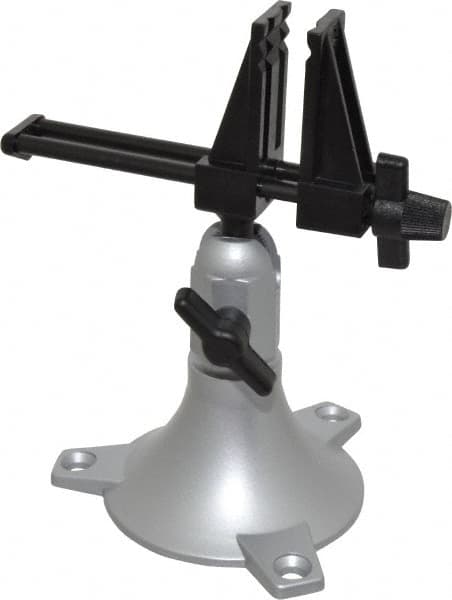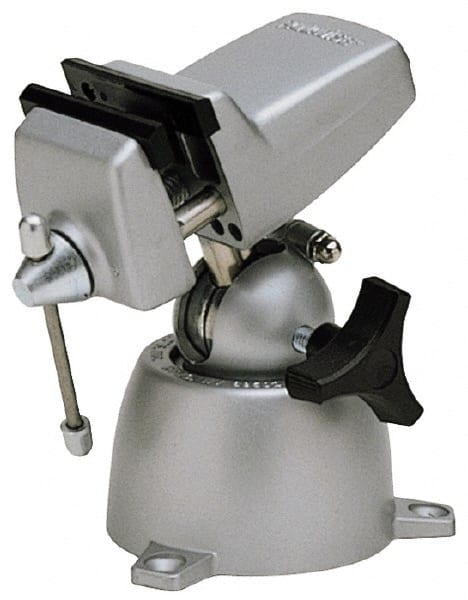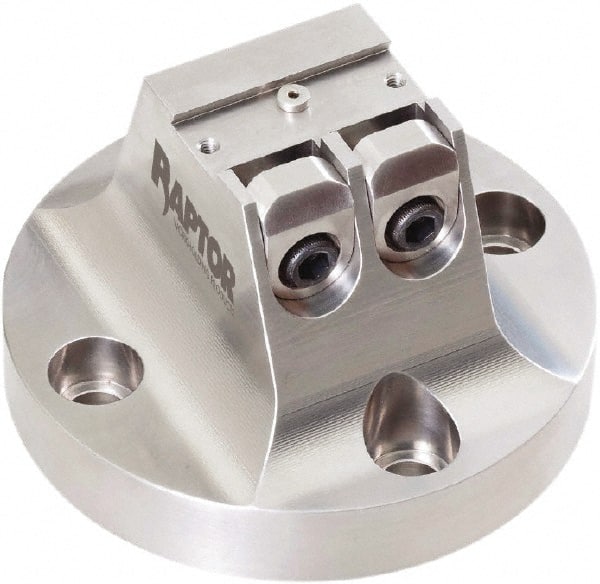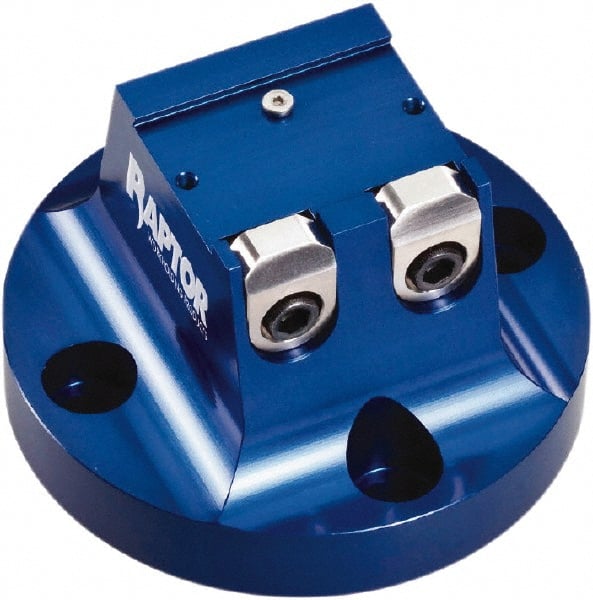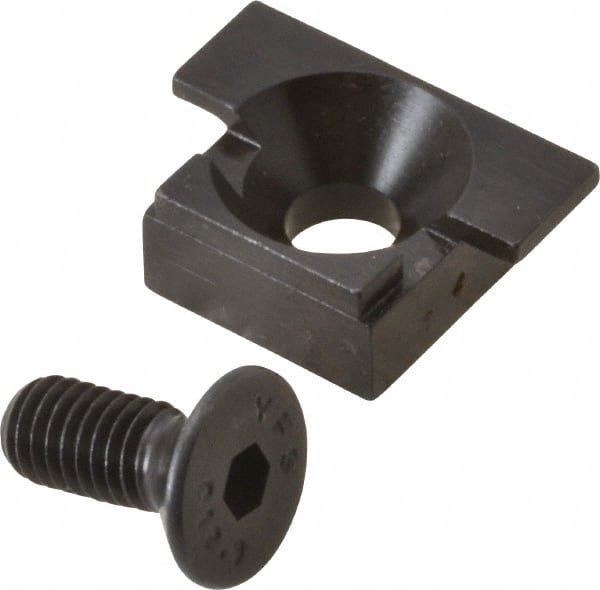The Vise: A Timeless Tool - Understanding, Choosing, and Shopping at GoVets

Introduction
Vises are essential tools that have been part of human craftsmanship for centuries. From ancient blacksmiths to modern engineers, the vise's role in holding objects securely has remained constant. This comprehensive guide explores the different types of vises, their history, unconventional uses, signs of wear, alternatives, and why you might need one. Additionally, we'll introduce you to GoVets, a trusted source for purchasing quality vises, and how shopping with us supports veteran causes.
Why would I need a Vise?
A vise is an indispensable tool that finds applications in various industries, workshops, and even home garages. It serves as a mechanical apparatus that securely holds an object, allowing you to perform various tasks with precision and ease.
Whether you're a professional in the manufacturing industry or a DIY enthusiast, a vise can significantly enhance your workflow. Here's why you might need a vise:
- Precision Work: Vises provide stability and accuracy, enabling you to perform intricate tasks like cutting, drilling, and grinding with precision. They ensure that the workpiece remains steady, allowing for exact measurements and alignments.
- Versatility: With different types of vises such as Bench and Pipe Vises, Machine and Drill Press Vises, and Modular Vises, you can find a vise suitable for various applications. From woodworking to metalworking, there's a vise designed to meet your specific needs.
- Safety: By holding the workpiece securely, vises reduce the risk of accidents and injuries. They prevent the object from slipping or moving during operations, ensuring a safer working environment.
- Efficiency: Vises free up your hands, allowing you to focus on the task at hand. They speed up processes by providing a stable platform, reducing the time and effort required to complete a project.
- Customization: With accessories and specialized components like Vise Jaws and Work Positioners, you can customize the vise to adapt to unique shapes and materials, enhancing its functionality.
In summary, a vise is a valuable investment that offers precision, versatility, safety, efficiency, and customization. Whether you're engaged in complex industrial tasks or simple home projects, a vise is a tool that simplifies your work and elevates your craftsmanship to the next level.
The History and Evolution of the Vise
The vise, a tool that has become synonymous with stability and precision, has a rich history that dates back to ancient times. Its development and various uses over the centuries reflect both technological advancement and human ingenuity.
Ancient Origins
The earliest known vises can be traced back to the ancient civilizations of Greece and Rome around 500 BCE. These primitive devices were mainly used by blacksmiths and metalworkers to hold hot metal while hammering it into shape. They were simple in design, often consisting of a wooden bench with clamping mechanisms.
Medieval Developments
During the medieval period, the vise underwent significant improvements. Blacksmiths and craftsmen started using metal components, allowing for greater durability and strength. The screw vise, a design that is still recognizable today, began to emerge in the 12th century. This period also saw the use of vises in armories for the production of weapons and armor.
The Renaissance and Beyond
The Renaissance brought about a surge in technological innovation, and the vise was no exception. It became an essential tool for artists, sculptors, and inventors. Leonardo da Vinci's workshop, for example, likely utilized vises in the creation of his various inventions and artworks.
During the Industrial Revolution, the vise's design was further refined, and mass production began. It became a staple in factories, aiding in the manufacturing of goods on a large scale. The introduction of cast iron and steel components allowed for more robust and precise vises.
Modern Uses and Variations
In the modern era, the vise has evolved into various specialized forms to cater to different industries and applications. From woodworking and metalworking to electronics and automotive repair, the vise's versatility is evident. Today, you'll find bench vises, machine vises, hydraulic vises, and even vacuum vises, each designed to meet specific needs.
Unconventional Uses
While the primary function of a vise has always been to hold objects securely, it has also found some unconventional uses over time. During the Prohibition era, vises were humorously (and illegally) used to crack open nuts containing hidden alcoholic beverages. In more recent times, artists and hobbyists have found creative ways to utilize vises in their crafts.
Summary
The vise's journey from a rudimentary clamping device to a sophisticated and indispensable tool is a testament to human innovation and adaptability. Its evolution reflects broader technological and cultural shifts, and its enduring relevance speaks to its fundamental utility.
Whether in a professional workshop, a factory, an artist's studio, or even a home garage, the vise continues to be a symbol of stability and precision. Its history is not just a tale of a tool but a reflection of our ever-changing relationship with craftsmanship and technology.
Understanding the Different Types of Vices:
Vises are essential tools that come in various forms, each designed to meet specific needs and applications. From holding pipes securely for plumbing tasks to clamping materials for precision machining, vises play a crucial role in numerous industries. Here's an introduction to the different types of vises:
- Bench and Pipe Vises: Ideal for woodworking, metalworking, and plumbing, these vises are versatile and commonly found in workshops.
- Machine and Drill Press Vises: Used in milling, drilling, and grinding operations, these vises offer precision and stability.
- Modular Vises and Components: Known for their adaptability, these vises can be customized for complex clamping needs.
- Sine and Toolmakers Vises: Designed for high-precision tasks like grinding and inspection, these vises are favored in toolmaking.
- Vise Accessories: Enhancing the functionality of vises, these include various components like brackets, bases, and air vise workholding.
- Vise Jaws and Jaw Caps: Essential for gripping and protecting workpieces, these components come in different materials and designs.
- Work Positioners: Specialized tools for holding objects in specific positions, used in welding, assembly, and inspection.
Understanding the various types of vises and their applications is key to selecting the right tool for your project. Whether you're a professional craftsman or a hobbyist, the following section will delve into why you might need a vise and how it can enhance your work.
Bench and Pipe Vises
Description
Bench and Pipe Vises are versatile tools used to hold objects securely in place. They are typically mounted on workbenches and are essential for various tasks like cutting, drilling, and shaping.
Use-Cases
- Cutting: Holding pipes and metal rods securely for precise cutting.
- Drilling: Clamping materials for accurate drilling operations.
- Shaping: Assisting in shaping and forming materials.
Industries
- Manufacturing
- Plumbing
- Carpentry
Top 5 Brands
- Wilton
- Yost
- Irwin
- Bessey
- Grizzly
Machine and Drill Press Vises
Description
Machine and Drill Press Vises are specialized tools designed to hold materials securely during machining operations. They are commonly used with milling machines and drill presses.
Use-Cases
- Milling: Clamping workpieces for precise milling operations.
- Drilling: Holding materials steady during drilling processes.
- Grinding: Assisting in grinding tasks for uniform results.
Industries
- Metalworking
- Manufacturing
- Automotive
Top 5 Brands
- Kurt
- Palmgren
- Röhm
- Precision
- GROZ
Modular Vises and Components
Description
Modular Vises and Components offer flexibility in clamping and holding various shapes and sizes of workpieces. They are adaptable and can be customized to suit specific needs.
Use-Cases
- Assembly: Facilitating the assembly of complex parts.
- Inspection: Holding parts securely for quality inspection.
- Custom Clamping: Adapting to unique shapes and sizes for specialized tasks.
Industries
- Aerospace
- Electronics
- Manufacturing
Top 5 Brands
- Mitee-Bite
- Carr Lane
- TE-CO
- Jergens
- Dapra
Sine and Toolmakers Vises
Description
Sine and Toolmakers Vises are precision tools used for holding parts during grinding, inspection, and other high-precision tasks. They are known for their accuracy and reliability.
Use-Cases
- Grinding: Assisting in precision grinding operations.
- Inspection: Holding parts for accurate measurement and inspection.
- Machining: Supporting high-precision machining tasks.
Industries
- Toolmaking
- Metalworking
- Manufacturing
Top 5 Brands
- Hermann Schmidt
- Suburban Tool
- Starrett
- Brown & Sharpe
- SPI
Vise Accessories
Description
Vise Accessories include various components and attachments that enhance the functionality of vises. These accessories can include air vise workholding, brackets, bases, and more.
Use-Cases
- Customization: Adapting vises to specific tasks and materials.
- Enhancement: Improving the functionality and versatility of existing vises.
- Maintenance: Replacing worn or damaged parts to maintain optimal performance.
Industries
- Manufacturing
- Construction
- Automotive
Top 5 Brands
- TE-CO
- Kurt
- Raptor Workholding
- Heinrich
- Gibraltar
Vise Jaws and Jaw Caps
Description
Vise Jaws and Jaw Caps are essential components of vises, designed to grip and hold various materials securely. They come in different materials and designs to suit specific applications.
Use-Cases
- Gripping: Ensuring secure and non-marring grip on delicate materials.
- Protection: Protecting both the vise and the workpiece from damage.
- Adaptation: Adapting to different shapes and sizes for versatile clamping.
Industries
- Metalworking
- Woodworking
- Manufacturing
Top 5 Brands
- TE-CO
- Kurt
- Mitee-Bite
- Raptor Workholding
- Chick
Work Positioners
Description
Work Positioners are specialized tools designed to hold objects in specific positions for various tasks. They are adjustable and can be used for complex positioning needs.
Use-Cases
- Welding: Holding parts in position for accurate welding.
- Assembly: Facilitating complex assembly tasks.
- Inspection: Supporting parts during detailed inspection processes.
Industries
- Manufacturing
- Electronics
- Aerospace
Top 5 Brands
- BESSEY
- Strong Hand Tools
- BuildPro
- Wilton
- Heinrich
Who are the most common users of the different types of Vices?
The different types of vises cater to a wide range of users across various industries and professions. Here's a breakdown of the most common users:
- Bench and Pipe Vises:
- Plumbers: For holding and cutting pipes.
- Woodworkers: For clamping wood during sawing, planing, and other tasks.
- Metalworkers: For holding metal pieces during shaping and welding.
- Machine and Drill Press Vises:
- Machinists: For precision milling, drilling, and grinding operations.
- Manufacturers: For holding parts during mass production processes.
- Modular Vises and Components:
- Engineers: For complex clamping and assembly tasks.
- Automotive Technicians: For custom clamping in vehicle repair and modification.
- Sine and Toolmakers Vises:
- Toolmakers: For high-precision grinding and inspection.
- Quality Control Inspectors: For holding parts during detailed inspection.
- Vise Accessories:
- Maintenance Technicians: For enhancing and maintaining existing vises.
- Industrial Workers: For customizing vises to suit specific industrial needs.
- Vise Jaws and Jaw Caps:
- Metal Fabricators: For gripping and protecting various materials.
- Carpenters: For holding wood without marring the surface.
- Work Positioners:
- Welders: For holding parts in position during welding.
- Electronics Assemblers: For complex assembly and soldering tasks.
- Specialty Vises (e.g., Pin Vises, Panavise):
- Jewelers: For holding small and delicate pieces.
- Watchmakers: For precision work on tiny components.
- Woodworking Vises:
- Furniture Makers: For clamping wood during carving, joining, and finishing.
- Air Vise Workholding:
- Aerospace Technicians: For specialized clamping in aerospace manufacturing.
These vises are also commonly used by DIY enthusiasts, hobbyists, and educational institutions for various projects and learning purposes. The diversity in design and functionality ensures that there's a vise suitable for almost any task, making them indispensable tools across many fields.
What are the most common signs that I need to replace my Vice?
Vises are robust tools designed for heavy-duty use, but like all mechanical devices, they can wear out over time. Here are the most common signs that different types of vises are becoming worn-out and may need to be replaced:
- Loose or Slipping Jaws:
- The vise fails to hold the workpiece securely.
- Jaws may slip or move during operation, leading to misalignment.
- Worn or Damaged Jaws:
- Visible wear, chips, or cracks on the jaw surfaces.
- Inability to grip without marring or damaging the workpiece.
- Screw and Handle Issues:
- Difficulty in turning the handle or screw.
- Noticeable wear or damage to the screw threads.
- Misalignment:
- Jaws do not align properly when closed.
- Workpiece is held at an angle, leading to inaccuracies.
- Structural Damage:
- Cracks, bends, or other deformities in the vise body or base.
- Loose or damaged mounting, leading to instability.
- Lack of Smooth Operation:
- Stiffness or resistance when opening or closing the vise.
- Unusual noises like grinding or squeaking during operation.
- Corrosion and Rust:
- Visible rust or corrosion, particularly in critical areas like the screw or jaws.
- Deterioration of protective coatings, leading to exposure of bare metal.
- Wear in Specialty Components:
- For modular and specialty vises, wear or damage to specific components like brackets, bases, or specialized jaws.
- Loss of Precision:
- For precision vises like sine and toolmakers' vises, any loss of accuracy or alignment.
- Air Leakage (For Air Vise Workholding):
- Inconsistent pressure or noticeable air leakage.
- Failure of pneumatic components to function properly.
It's essential to regularly inspect and maintain vises to ensure their longevity and performance. Some issues, like worn jaws or minor misalignment, might be fixable with adjustments or replacement parts. However, significant wear or structural damage usually indicates that the vise needs to be replaced.
Investing in quality vises and following proper usage and maintenance guidelines can minimize wear and prolong the life of these vital tools. If any of these signs are observed, it's wise to consult with a professional or the manufacturer to determine the best course of action, whether it's repair, part replacement, or purchasing a new vise.
Alternatives to Vises: Options and Considerations
Vises are essential tools for holding and securing objects during various tasks, but there might be situations where a vise is unavailable, unsuitable, or simply not the preferred choice. In such cases, alternative products or tools can be used. Here's an overview of common alternatives and reasons why one might opt for them:
- Clamps:
- Usage: Clamps can be used to hold objects securely, especially for woodworking and light metalworking tasks.
- Reasons for Choosing: Clamps are more portable and can be used on surfaces where mounting a vise is not feasible. They are available in various sizes and designs to suit different needs.
- Pliers and Wrenches:
- Usage: For tasks that require holding small objects or fasteners, pliers and wrenches can be used.
- Reasons for Choosing: They are hand-held and offer more mobility. Ideal for quick tasks where setting up a vise might be time-consuming.
- Workbenches with Built-in Holding Mechanisms:
- Usage: Some workbenches come with integrated holding mechanisms like bench dogs or specialized clamps.
- Reasons for Choosing: These provide a versatile workspace without the need for a separate vise, saving space and offering convenience.
- Vacuum Holding Systems:
- Usage: These use suction to hold objects, often used in woodworking or delicate tasks like holding glass or ceramics.
- Reasons for Choosing: They offer non-marring holding and can be used on surfaces that might be damaged by traditional vises.
- Magnetic Holders:
- Usage: Magnetic holders use magnets to secure metal objects and are commonly used in welding and metal fabrication.
- Reasons for Choosing: They provide quick setup and release, and their magnetic force can be adjusted to suit the task.
- Fixture Plates and Jigs:
- Usage: These are specialized holding devices designed for specific tasks or parts, often used in manufacturing.
- Reasons for Choosing: They offer high precision and repeatability, especially for mass production.
- Hand-Holding (Not Recommended):
- Usage: In some casual or quick tasks, individuals might hold the object by hand.
- Reasons for Choosing: Convenience and speed, but this method is generally unsafe and not recommended for most tasks.
Why Might Someone Need a Vise but Not Have It?
- Space Constraints: Lack of space for mounting or storing a vise.
- Budget Limitations: High-quality vises can be expensive, and budget constraints might lead to opting for alternatives.
- Specific Requirements: Some tasks might require specialized holding solutions that a standard vise cannot provide.
- Temporary or Infrequent Need: For those who rarely need a vise, investing in one might not be practical.
Summary
While vises are incredibly versatile and valuable tools, there are various alternatives available to suit different needs, preferences, and constraints. Understanding the specific requirements of a task and the available options can guide the selection of the most suitable holding solution, whether it's a traditional vise or an alternative tool. Safety, precision, and suitability should always be the guiding factors in making this choice.
What are some comical but useful ways to use Vices that you may not have thought of?
- Nutcracker Extraordinaire: Have a tough nut to crack? A vise can be your gourmet kitchen tool, providing the perfect pressure to crack open even the most stubborn nuts without smashing them to pieces.
- The Ultimate Bottle Opener: Forget traditional bottle openers; a vise can be your party hero. Whether it's a tightly sealed jar of pickles or a bottle of your favorite beverage, the vise is there to save the day (and impress your friends).
- Artistic Sculpture Stand: Working on a masterpiece? Use a vise to hold your clay or other sculpting materials. It might not be the most conventional easel, but it'll surely add a touch of industrial chic to your art studio.
- Shoe Repair Assistant: If your shoe sole is coming loose and you need a quick fix, why not use a vise to hold it together while the glue dries? It's like having an extra pair of hands, only stronger!
- Garden Helper: Need to hold a flower pot or garden tool while you work on it? Your vise can double as a gardening assistant, holding things steady while you plant, paint, or repair.
- The Unconventional Vice for a Vise: Have a bad habit you want to quit? Write it down, place it in the vise, and squeeze it tight. It's a symbolic (and slightly amusing) way to "crush" those unwanted habits.
- Holiday Decoration Holder: Working on intricate holiday decorations? Use the vise to hold ornaments or other items while you add those detailed finishing touches. Just be gentle; it's a vise, not a velvet glove!
- Pet Toy Factory: Making toys for your furry friends? A vise can hold ropes, bones, or other materials while you knot, twist, or assemble the ultimate pet amusement device.
- The Barber's Assistant: Need to trim a broom or brush? Clamp it in the vise and give it a haircut. Just don't confuse it with your actual hair!
- Dramatic Movie Prop: Filming a thriller or action scene? A vise can be a dramatic prop, holding mysterious objects, secret documents, or even "defusing" a fake bomb.
While these uses are certainly unconventional (and should be approached with caution and common sense), they showcase the vise's versatility beyond the workshop. Who knew that this serious tool could have such a whimsical side? Just remember, always use a vise responsibly, even when having fun with it!
Shop Vises at GoVets: Quality, Variety, and Commitment
When it comes to purchasing a vise, quality and trust are paramount. GoVets, the Nation's Largest Veteran-Owned Online Store, is your go-to destination for all types of vises. Here's why choosing GoVets is a decision you'll never regret:
- Extensive Selection: From Bench and Pipe Vises to Modular Vises and Components, GoVets offers a wide variety of vises to suit every need. Whether you're a professional craftsman or a DIY enthusiast, you'll find the perfect vise for your project.
- Quality Brands: GoVets features top brands known for their durability and precision. With names like Wilton, Yost, Kurt, and more, you're assured of quality products that stand the test of time.
- Free Shipping: Enjoy 100% free shipping within the 48 contiguous United States. No hidden costs, just great products delivered right to your doorstep.
- Supporting Veterans: As a socially responsible business, GoVets contributes a portion of each sale to veteran non-profit causes of national significance. Shop with us, and you're supporting those who have served our country.
- Trusted and Accredited: GoVets is a BBB-Accredited Business and a VA-Verified Serviced-Disabled Veteran-Owned Small Business (SDVOSB). Our commitment to transparency, honesty, and customer satisfaction is reflected in our accreditations and reviews.
- Dedicated Customer Service: Our experienced team is here to assist you with any questions or concerns. We understand the importance of trust in the e-commerce industry, and we're committed to earning your confidence through exceptional service.
- Patriotic Shopping Experience: Targeting government buyers, businesses, academic institutions, and patriotic consumers, GoVets offers a unique shopping experience that aligns with values of service and integrity.
By choosing GoVets, you're not just buying a tool; you're investing in quality, supporting veterans, and becoming part of a community that values excellence and responsibility. Explore our extensive range of vises and discover the GoVets difference today!
Conclusion
The vise is more than just a tool; it's a symbol of precision, stability, and innovation. Its evolution reflects our journey as craftsmen, artists, and inventors. Whether you're looking for a vise for professional use or exploring alternatives for a specific task, understanding the vise's versatility and applications is key. And when it comes to purchasing a vise, GoVets stands as a beacon of quality, variety, and commitment to social responsibility. Explore our collection and take your craftsmanship to the next level.
Product Recommendations



